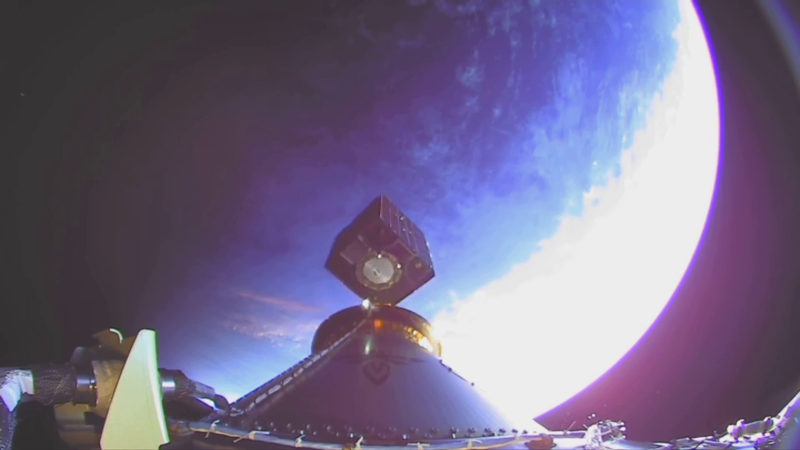Firefly Aerospace Sets New Launch Speed Record for U.S. Space Force Mission

Firefly Aerospace’s Alpha rocket carrying a satellite from Millenium Space Systems into orbit after launch on September 14.
Space Force’s goal of wanting the capacity to launch a satellite on very short notice just passed a major milestone. The Victus Nox mission, Latin for “conquer the night,” was a success, and saw private company Firefly Aerospace and Millennium Space Systems successfully prepare a launch in less than a day, followed by the lift-off occurring shortly afterwards.
Firefly Aerospace, a launch vehicle provider, said yesterday in a blog post that the Victus Nox mission was officially realized. Prior to call-up from Space Force, Firefly’s Alpha rocket lay waiting on a launch pad at Vandenberg Space Force Base in California with a satellite from Millenium Space Systems as a payload.
Read more
Michelle Wolf offers opinions on Louis C.K., Dave Chappelle, and the #MeToo movement
Sopranos star Drea de Matteo says ended up on OnlyFans because she wouldn't get vaxxed
Nexus Mods Fine With Bigots Leaving Over Removed Starfield ‘Pronoun’ Mod
United Airlines Flight Depressurizes And Drops 28,000 Feet In Ten Minutes
Millenium and Firefly both signed on to the Victus Nox mission with separate contracts in October 2022. Prior to the launch, Millenium was first required to transport the mini-fridge-sized satellite over 170 miles (274 kilometers) from its factory in El Segundo, California, to Vandenberg Space Force Base in 60 hours. During this time, Firefly conducted dry runs for the satellite’s integration with the Alpha rocket before the 24-hour notice from Space Force.
Victus Nox is a part of Space Force’s push into tactically responsive space, which describes the idea that, in times of war or national emergency, destroyed satellites need to be quickly replaced. While the concept had been on the Armed Forces’ radar, this past March was the first time Space Force specifically asked Congress for money toward enacting it, proposing a $60 million budget.
In 2021, Space Force first demonstrated its rapid response capabilities during its Tactically Responsive Launch-2 mission, in which a Northrop Grumman Pegasus XL rocket flew to space. According to Space Force’s own account, the mission occurred on June 13, 2021 and saw Northrop Grumman launching the rocket from Stargazer, a modified Lockheed L-1011 aircraft, within a window of 11 months. After taking off from Vandenberg Space Force Base, Stargazer reached 40,000 feet (12 kilometers) above the Pacific Ocean and launched Pegasus, which carried a demonstration satellite into orbit.
For more spaceflight in your life, follow us on X (formerly Twitter) and bookmark Gizmodo’s dedicated Spaceflight page.
More from Gizmodo
Kentucky GOP Candidate Signed Pledge Saying the Birth Control Pill Causes Abortions
Final Fantasy VII Rebirth Won’t Let Players Import Saves From The Last Game
LeBron James, wife and 2 associates named in federal PED investigation
Hasan Minhaj admits to fabricating alarming details in his stand-up specials
Sign up for Gizmodo's Newsletter. For the latest news, Facebook, Twitter and Instagram.

